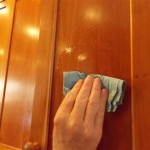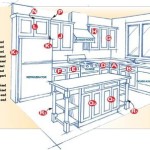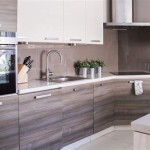Essential Aspects of Functional Kitchen Cabinet Design
When designing a kitchen, the functionality of the cabinetry is paramount. Well-designed cabinets not only enhance the aesthetics of the space but also provide ample storage and work surfaces, making the kitchen a more efficient and enjoyable area to cook and entertain.
1. Cabinet Layout and Flow:
The cabinet layout should be carefully planned to create a seamless workflow. Consider the placement of appliances, countertops, and storage areas in relation to one another. Ensure that there is enough space between counters and cabinets for comfortable movement and easy access to essential items.
2. Storage Optimization:
Maximize storage capacity by incorporating a variety of cabinet types, including base cabinets, wall cabinets, and pantry cabinets. Utilize vertical space with tall pantry cabinets or open shelving to store taller items. Consider using pull-out shelves, lazy Susans, and drawer organizers to maximize storage and access.
3. Drawer vs. Shelf Storage:
Decide on the appropriate storage type for different items. Drawers provide easy access to frequently used items, while shelves are suitable for larger or taller items. Consider using a combination of drawers and shelves to meet specific storage needs.
4. Cabinetry Materials:
Choose cabinetry materials that are durable and easy to maintain. Popular options include wood, laminate, and thermofoil. Wood offers a timeless and elegant look, while laminate is moisture-resistant and available in a wide range of colors and patterns. Thermofoil is an affordable and durable material that mimics the look of painted finishes.
5. Door Styles and Hardware:
The door style and hardware can significantly impact the overall aesthetic of the kitchen. Consider the size and style of the kitchen when choosing door styles. Hardware, such as knobs and pulls, should complement the cabinetry and enhance functionality.
6. Lighting:
Incorporate adequate lighting into the cabinetry design to improve visibility and create a welcoming atmosphere. Under-cabinet lighting can illuminate work surfaces, while recessed lighting or pendant lights provide general illumination.
7. Maintenance and Cleaning:
Choose cabinetry materials and finishes that are easy to clean and maintain. Consider using materials that are resistant to moisture, heat, and stains. Wipe down surfaces regularly to keep the cabinets looking their best.
By considering these essential aspects of functional kitchen cabinet design, you can create a space that is both beautiful and highly functional, making it a joy to cook and spend time in.

10 Steps To An Organized And Functional Kitchen

What Is A Functional Kitchen Design Joseph Bath

10 Special Kitchen Cabinet Features Innovative Blog

9 Tips For Designing A Functional Kitchen Cabinets Design Layout Cabinet Custom

15 Stunning Kitchen Cabinet Designs In Singapore With 5 Essential Tips

9 Ideas To Keep Your New Kitchen Functional And Organized

Everything We Did To Make Our 90 S Kitchen More Functional

How To Create A Functional Space In Small Kitchen Cliqstudios

35 Functional Kitchen Cabinet With Drawer Storage Ideas Homemydesign Modern Design Custom Cabinets Organization

A Design Minded Guide To Functional Kitchen Cabinets
Related Posts








